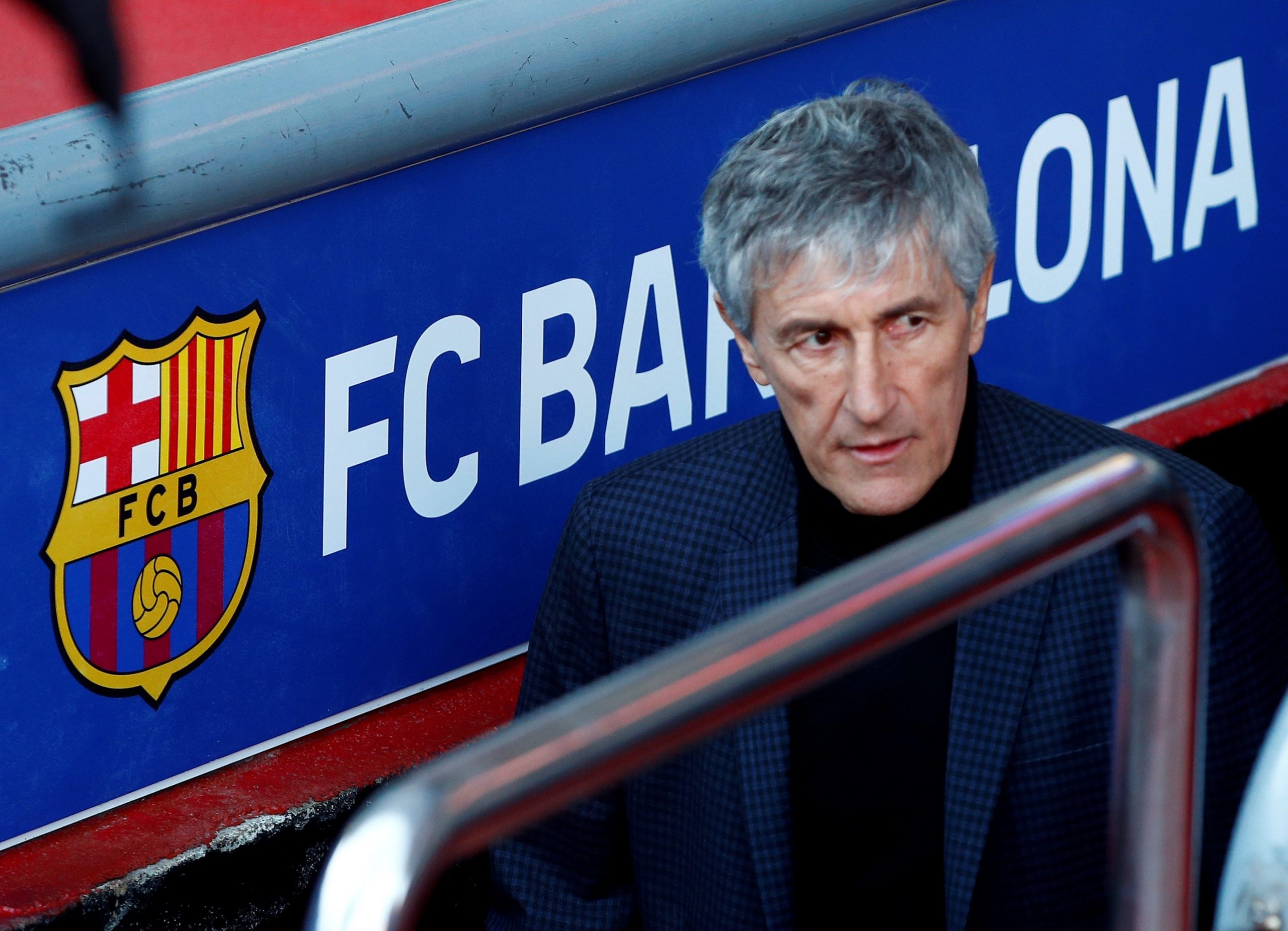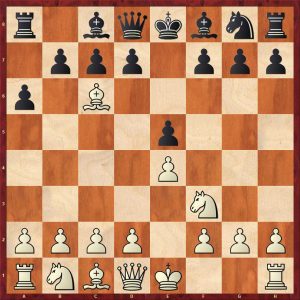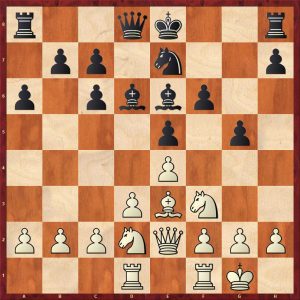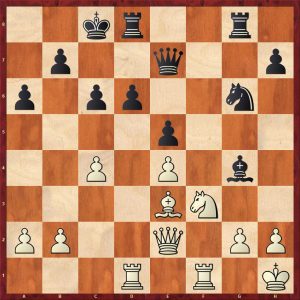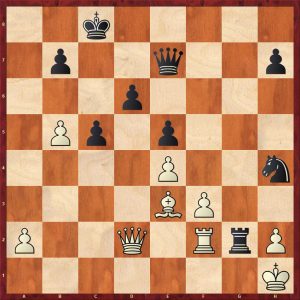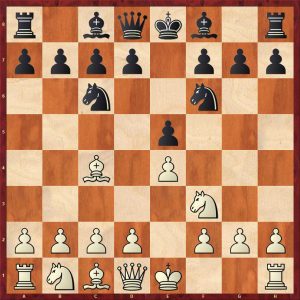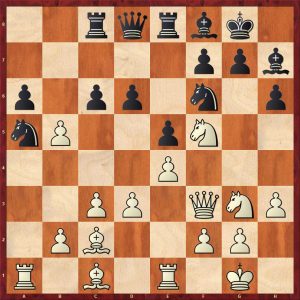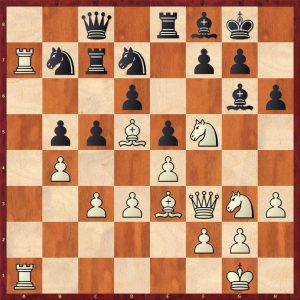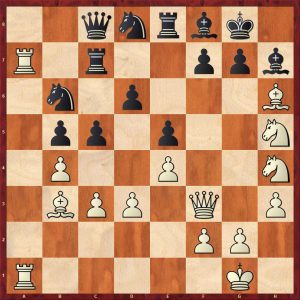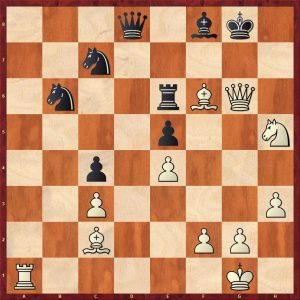Football is very much not a game of chess. The pieces rarely go where you tell them to, players don't die when they're tackled (Neymar aside), and when your worst player reaches the opposition touchline, they're not promoted into Lionel Messi. Except, apparently, if you're Quique Setién, who this week finds himself outside of his preparation, as the manager of Barcelona.
And as every Five Things You Need To Know About New Barcelona Manager Setién profile has told you, the Spaniard is an avid chess player (and apparently he also coached the Russian beach football team, because nobody does beaches like Russia). He talks proudly of the time he tested Kasparov in a simultaneous exhibition (where a grandmaster, like some intellectual octopus, will play a dozen or more players at once), and by all accounts has kept up the hobby until this day.
Of course, there's a somewhat sad history of figures in the world of football boasting of their chess prowess. Who can forget Nigel Short's David Brent vs David Brent-esque report of his game with Sol Campbell? The recently retired defender had stated that chess helps him think strategically, but responded to Short's 1. e4 with the almost childlike 1... a5 before being crushed.
More recently in 2018, Liverpool's Trent Alexander-Arnold - having talked of his many games on the team bus against teammate Ben Woodburn - found himself facing Magnus Carlsen, newly arrived in the UK to defend his World Championship title. Alexander-Arnold tried to unsettle the dominant Norwegian with the rarely-seen Pirc defense, or perhaps was just picking at random, because by the fourth move his knight was forced into a humiliating retreat back to its opening square. By move seven he'd blundered a bishop. Then a rook. Then, with his king stepping confidently into the centre, presaging the surging runs for Liverpool with which we've become so familiar, he was mated by a combination of Magnus's minor pieces. If you work in public relations for a celebrity who can't shut up about chess, let me give you this simple advice: learn the first five moves of the Ruy Lopez opening, then blunder to your heart's content. It'll at least look like you put up a fight.
As it happens, history has preserved a couple of Setién's games, who assuredly does know the Ruy Lopez, also known as the Spanish Game. So today we're going to analyze his play in depth, hoping to understand more of the mind that will be making Messi's moves for foreseeable future. In 1993, Setién was in his second spell as a player at Racing Santander. That year he traveled to the Benasque Open in the Pyrenees, where his game against Joan Gensana Berzunces (a regular on the Spanish tournament circuit who peaked at about 2068 Elo, perhaps roughly Isthmian League level) is available on ChessBase. Setién with the black pieces (i.e. playing away from home) faced the Exchange Variation of the Ruy Lopez:
After 5. Bxc6, this is an offer of an active, open game from the white (i.e. home) player, who gives black the bishop pair (with their diagonal runs, think of them as chess's wide forwards), in exchange for white having superior pawn structure (much like a Sean Dyche team). After capturing the bishop, white castles (sets up a three man wall in front of his keeper, the king) and Setién follows up with 5... f6 (a bit like an overlapping centre-back, weakening defensive cover by stepping up-field), a move favoured by US prodigy Bobby Fischer. Setién however played conservatively, and by move 10 his position felt claustrophobic. His bishops are stuck in the centre (with no access to the halfspaces), his rooks (chess's marauding full-backs) are stuck at the back:
Despite having been quoted as saying "chess and football are very similar. If you're controlling the centre of the board or the middle of the field, you've a high chance of winning the game", it is white in control of the centre here, with both its rooks in the middle (like inverted full-backs). But as the game progresses, Gensana Berzunces doesn't exploit Setién's vulnerable centre. In fact, the game turns when white attacks down the left flank after the position below, with 20. b4, instead of the sensible defensive 20. h3 (man-marking the winger on g4), allowing Setién to switch flanks and launch a powerful counter-attack with Nh4:
Soon Setién has committed most of his pieces to this attack, and under pressure, white makes a mistake in defence with 20. Rf2:
After 20... Nxf3, Setién has created an attacking overload: white's queen is threatened, but worse, white needs to scramble to cover its open goal, risking Rg1# mate. Unable to defend all of Setién's attacking options, white soon concedes. Perhaps more revealing of Setién's weaknesses is one of Setién's games from 2002, shortly after securing promotion for Racing Santander, this time as their manager. In a simultaneous exhibition given by then World Champion Vladimir Kramnik in Barcelona, Setién was again black and played the Two Knights Defence:
The game was incredibly cautious and slow to build up, and it wasn't until here with 19. axb5 that the game's first ground duel occurred. Just look at all black's pieces tucked away in their own half:
This attack down Setién's queen-side started to look quite threatening, however, drawing many of his pieces over to help defend ("the objective is to move the opponent, not the ball." — Pep Guardiola):
At this point, Kramnik sprang the trap and switched play to the other flank, with Setién unable to defend in transition:
From there, with Setién's defensive organisation in tatters, he soon conceded:
From these two games, we can draw some clear analogies with Setién's play style in football:
Slow, patient buildup
In 2018/2019, Real Betis had the highest average possession duration with 28.7 seconds beating out even Barcelona's 28.5. They had third shortest goalkeeper pass length, and led the league for their proportion of backwards passes at 10.2%, only slightly more cowardly than Athletic Bilbao and Real Sociedad. Expect no wild attacking gambits here.
Poor defensive transitions
Last season, Real Betis conceded more shots generated by a high press than any other side bar Levante. The flip side of the slow patient buildup is that when team's bait you into a trap, bad things happen.

It remains to be seen how these aspects of Setién's game play out at one of the world's biggest clubs. His love of chess (like his talk of cows and his folksy surprise at the job in general) is unlikely to give him any extra credibility in a dressing room with some of the world's best football players. But there are many skills involved in the game of chess - some of them are pure, intuitive creativity, and perhaps that will help manage a genius like Messi. Others, however, are cold, hard calculation, and if there's one thing Barcelona need, with their aging stars and Champions League capitulations still fresh in mind, it's a dispassionate, unsentimental plan for the future.
Header image courtesy of the Press Association
